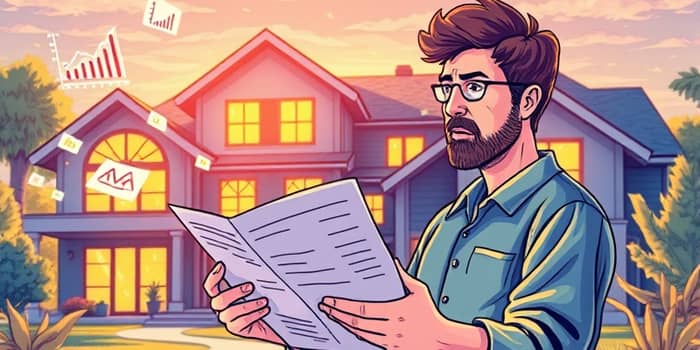
Refinancing offers borrowers a chance to reassess their debt and tailor their obligations to evolving needs. When market rates shift or life circumstances change, revisiting your loan terms can unlock new financial pathways. This article explores why, when, and how you should seize refinancing opportunities in 2025 to optimize your borrowing strategy.
Whether you hold a mortgage, auto loan, student debt, or home equity line of credit, understanding the mechanics and benefits of refinancing is critical. By the end, you’ll have practical steps and insights to decide if refinancing is right for you.
At its core, refinancing involves replacing an existing loan with a new one, usually to secure better terms. Borrowers might pursue a lower interest rate, an adjusted repayment period, or cash-out options.
Homeowners, students, and car buyers alike can refinance to adapt their payment schedules to current goals. Experts note that refinancing becomes especially attractive when market rates dip below your existing loan’s rate.
Reevaluating your debt structure can yield substantial rewards. Key motivations include:
For instance, a $303,280 mortgage at 7.12% can be refinanced to 6.2%, dropping monthly payments by $292 and saving tens of thousands over decades.
In 2025, economic indicators point to stabilized or slightly lowered mortgage rates compared to recent peaks. Many borrowers still carry contracts with 7.5–8% interest, making today’s sub-7% loans highly appealing.
Financial institutions are courting “serial refinancers,” offering rate buydowns and cash incentives. Yet, state-specific closing costs and seasoning requirements temper too-frequent refinancing.
Before pulling the trigger, quantify your potential gains versus costs. Typical closing fees range from 2% to 5% of the loan amount. Use a break-even analysis to determine how long you must hold the new loan to recoup those expenses.
Example: A $7,000 closing cost paired with a $292 monthly reduction results in a break-even point of 23 months. If you plan to stay in the home longer, the refinance is likely worthwhile.
Approval hinges on several factors:
Be aware that each credit inquiry can cause a temporary dip in credit score of up to five points. Shop within a 45-day window to minimize this impact.
Approach refinancing methodically to maximize benefits and prevent surprises:
While refinancing can be transformative, it carries tradeoffs:
Evaluate your property’s value trends, tax implications, and potential life changes before committing.
Consider these scenarios that illustrate real-world outcomes:
Mortgage: A homeowner refinances $303,280 at 7.12% into a 6.2% 30-year fixed loan. Monthly payments drop from $2,042 to $1,751, saving $292 per month and recouping $7,000 in closing costs in under two years.
Student Loan: By refinancing from 5.8% to 4.2% on a 10-year balance of $50,000, monthly obligations might increase by $205 when shortening to an 8-year term, yet total interest could shrink by over $5,000.
Auto Loan: Dropping half a percentage point on a $30,000 auto loan trimmed over five years can yield significant total interest savings, provided the new rate savings exceed any lender fees.
Refinancing is not a one-size-fits-all solution but a strategic tool. When executed correctly, it can yield major savings on overall interest paid, improved cash flow, and enhanced financial flexibility. By monitoring market trends, evaluating costs, and understanding lender requirements, you can confidently revisit your loan terms whenever favorable refinancing opportunities arise.
Armed with the insights and steps outlined here, you are ready to navigate the refinancing process in 2025 with clarity and purpose. Remember: diligent preparation and informed decision-making are your best assets in unlocking the full potential of your loan journey.
References













